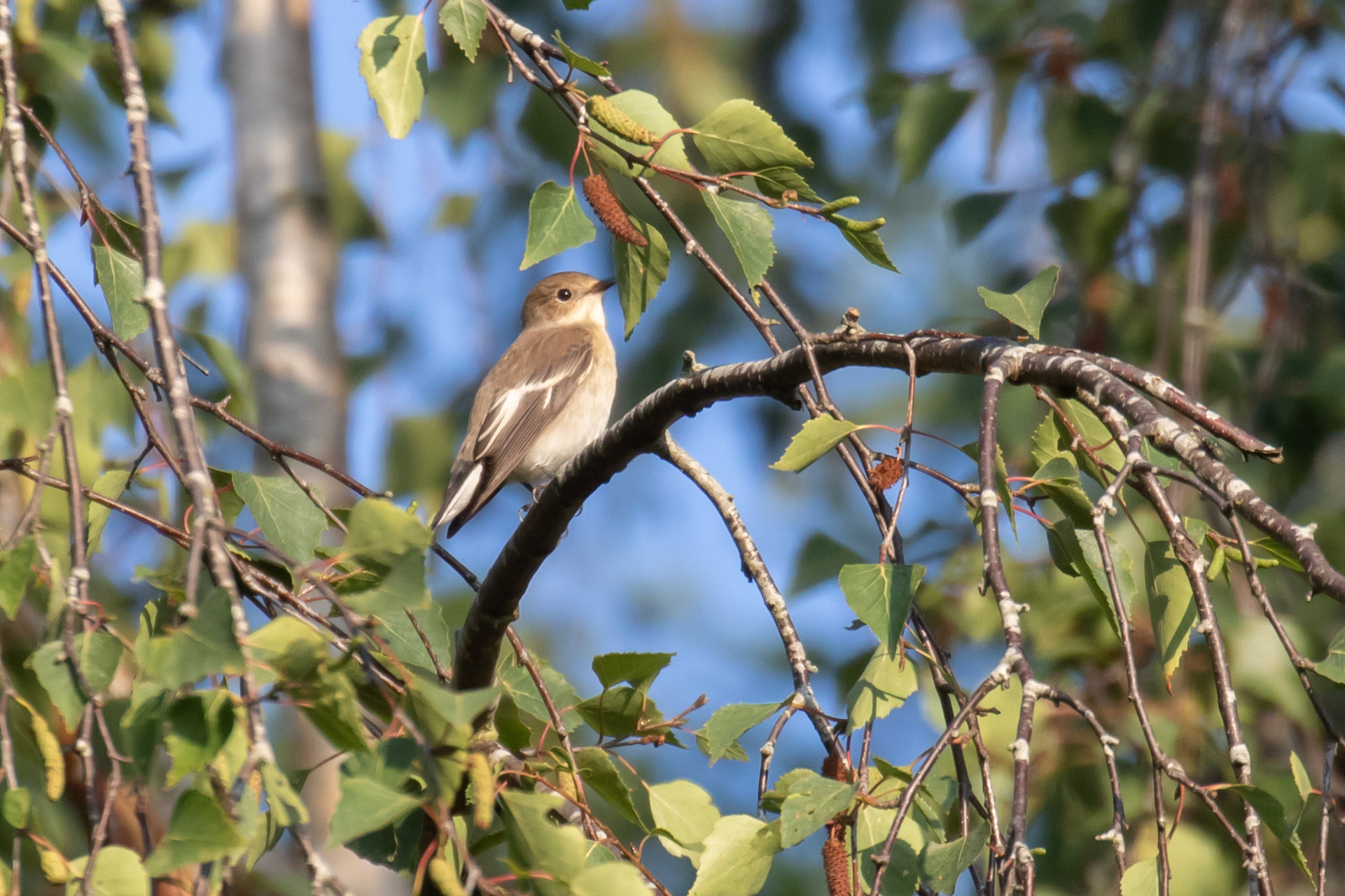An immediate consequence of suffering a femoral neck stress fracture back in February was that I had to stop exercising. Within a month I was able to walk again, albeit with a heavy limp. With spring migration imminent but with running not an option, I began limping around the nearby Lye Valley, birding. From there I discovered the adjacent Warneford Meadow and Southfield Golf Course. Put together, this area had some interesting habitat, despite being surrounded by the housing of Headington and the Churchill Hospital. More importantly, this area was situated on top of an escarpment which runs from Headington hill southwest to Hill Top Road and Barracks Lane. A combination of the location and the habitat made me think there was no reason why the area should not attract some migrant bird species. The first few months of regular visits, to what quickly became my local patch, were recorded here.
The first season was really about getting to know the area and to begin to discover which areas were best for birds. Spring 2019 did not produce any scarce migrant species, such as Redstart, Wheatear or Ring Ouzel. A random Lesser Whitethroat in a tiny urban garden and a couple of spring Willow warblers were the only migrant fare. But Southfield Golf Course always felt as if it had the potential to turn something up.
Autumn 2019 has been dominated by reports of Tree Pipits moving through England in good numbers. Tree Pipit is a rare bird in Oxon, usually with less than a handful of records per year. So last week, in a moment of blind optimism, Dave Lowe and I began a series of early morning sessions, standing on the highest point of the golf course, watching and listening for migrants. Its is a nice idea in theory, providing you can hear anything above the sound of the lawnmowers cutting the greens. On our first visit a flock of 5 Sand Martin flew south, seconds after we had arrived. I just about managed a record shot of the final bird:

But despite this early success (Sand Martin away from water is not an easy bird to record), the next few sessions failed to produce any overhead migrant passerines. However, driven on by reports of Tree Pipit from Mark Merritt on the Oxon downs over the Bank Holiday weekend, Dave and I persisted. Bank Holiday Monday saw us resume our vigil at 6am. Within 15 minutes we had been rewarded with 2 Yellow Wagtails, which flew over silently, again southwest. An expected patch tick. We were then visited by a groundsman on a lawnmower who decided to cut the nearest greens to our spot, making hearing any calling overhead pipit impossible.
We cut our losses and began checking some of the wooded areas for migrants. A brief Lesser Whitethroat was the first of the autumn. The last few days had seen a decent sized flock of Long-tailed, Blue, Coal and Great Tits, Goldcrests, Chiffchaffs and Willow Warblers feeding in this area. We found the flock and began checking the birds as they moved through the silver birches, now bathed in warm sunshine.
As I scanned through the leaves, a stationary bird caught my eye. I only saw the head and back for a second before it flicked away, but surely that was a Pied Flycatcher? It was enough for me to call “Flycatcher!” to Dave. He responded that he too had just had a glimpse of what he thought was Pied Flycatcher’s head. We were both keen to see the bird again, but it took nearly twenty minutes before it was relocated, Dave finding it back close to where we both first glimpsed the bird. After a few moments of celebration, we moved back away from the trees and the first Pied Flycatcher for the Lye Valley area began to settle down to feed:



A self-found county tick, on my local patch with a good mate. Does it get better? Well yes! A pair of Ring-necked Parakeets shot across the golf course and provided a moment of distraction from the flycatcher, another patch tick. We also added a few late Swifts and a Whitethroat to the patch day list, which was by then a record-breaking 37 species, recorded here.
But the day did not end there. Local birder Isaac West visited the golf course on news of the Pied Flycatcher. Whilst he was unsuccessful in relocating the Pied Flycatcher, he turned up a group of at least 5 Spotted Flycatchers, another new species for the area. These birds were exactly where we saw our Lesser Whitethroat earlier, so may have come in during the morning. I managed to drop in late afternoon and saw at least 3 Spotted Flycatchers flycatching busily in the heat of the afternoon:

So we went from adding the first decent migrant passerine (Yellow Wagtail) to finding an even more decent county scarcity. Pied Flycatcher records are just about annual in Oxfordshire, with usually just a couple of spring or autumn records. This weekend had seen a decent movement of Pied Flycatchers over south-east England. There were three Oxon records on Monday, including our bird, which were just about the most northwesterly inland records: we were just on the edge of the wave.

More importantly, this weekend demonstrated that our patch can attract migrant birds, even though we suspect that Monday’s fall of 6 flycatchers of 2 different species was an exceptional event. We still await Tree Pipit, but suddenly nearly anything seems possible. Which is a good feeling.
